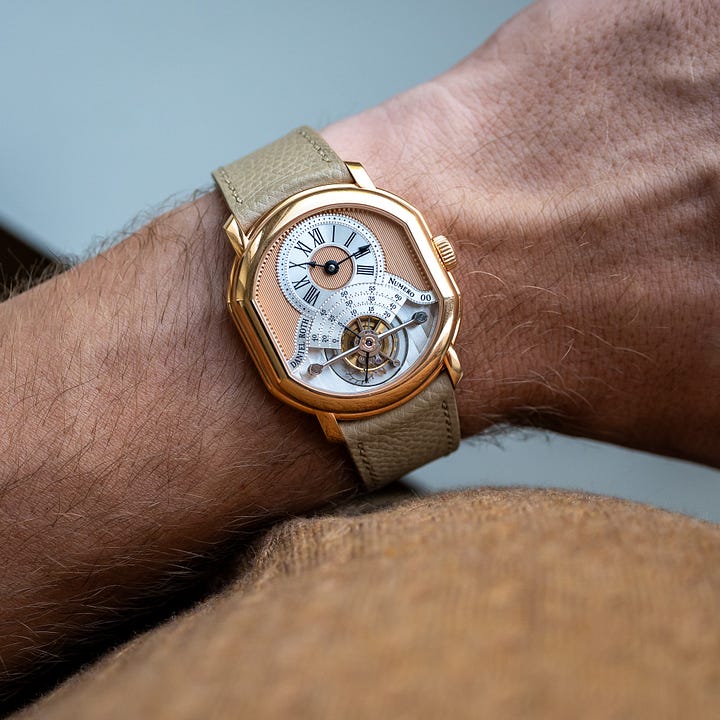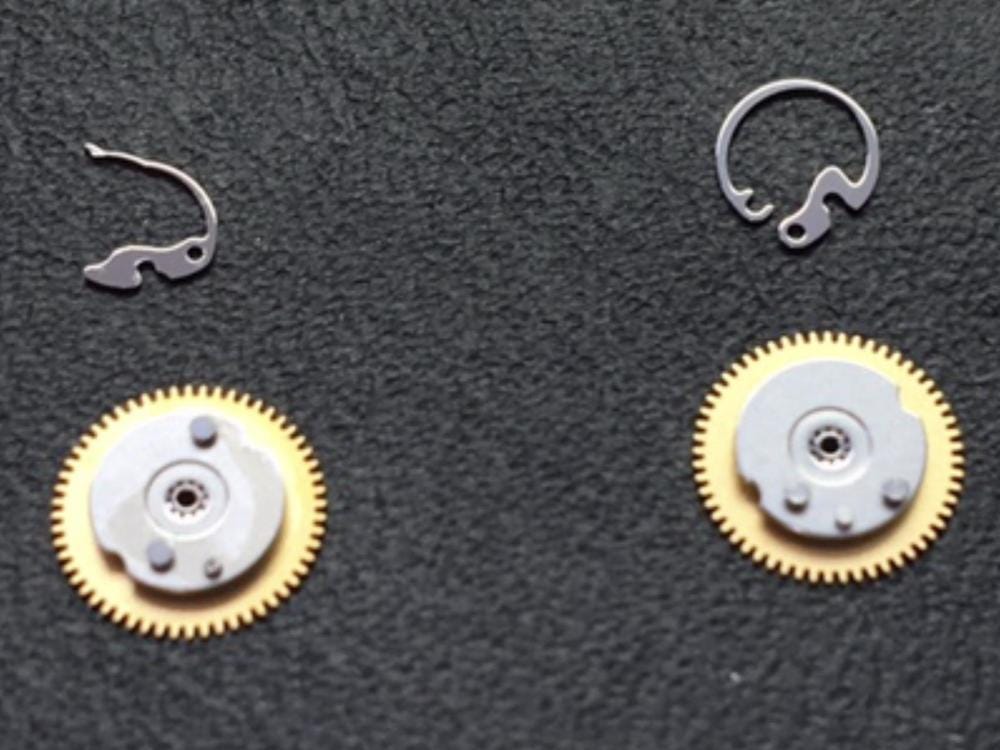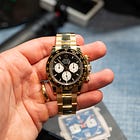My Complicated Feelings about Watches & Wonders (and Luxury)
Consumption is fast. Collecting is slow.
Happy Friday. In today’s newsletter:
We probably won’t even talk about the biggest “releases” next week
The well-cast watches of White Lotus
Then, the main event: A Watches and Wonders confession—on collecting, not consumption
Unpolished is a newsletter, but the entire archive is available to paid subscribers here.
Before Watches & Wonders, Unpolished is having a SALE! I’m offering a 10% discount on any subscription. The fun starts next week, with at least 2 exclusive newsletters and 2 podcasts. You’ll also get access to our new chat for paid subscribers. Sign up now to receive it all for just $89/year or $9/month (ends April 6):
We probably won’t talk about the biggest ‘releases’ next week
I recently spoke with Matthew Zinski, the watchmaker who’s also behind Typsim (full article soon). I asked about his perspective on Rolex movements and whether he sees any common issues. He said problems pop up equally across brands—it’s the nature of mechanical watches. What often sets Rolex apart is iterating on calibers to make incremental improvements.
We discussed the caliber 3186, found in the GMT-Master II until 2018. A commonly-reported issue resulted from a spring that drove the jumping hour—it was super flimsy. First, this made it difficult to set the time; then, the hour hand wouldn’t move; eventually, it’d rotate freely.
So, Rolex made a more substantial spring that it’d swap into GMT-Master IIs during service:
“I don’t know if everyone catches those things, but I think it’s awesome,” Zinski said. “Rolex is always thinking of the watchmaker.”
It’s a reminder that perhaps the most important updates—or at least those most meaningful to manufacturers like Rolex—won’t even be discussed during the chaos of Watches and Wonders.
The Well-Cast Watches of White Lotus
I’m finally caught up on White Lotus. It’s hard not to catch the show’s many well-cast watches: Matching Rolex Day-Dates on the country-clubbing Southerners, MoonSwatch on the (incestual?) high schooler, Hublot for his gym-going, deal-closing older bro, tiny Cartier Baignoire on our career-minded New Yorker, and a Timex Q for the mysterious Walton Goggins. And, of course, no watches for the most grounded characters.
Here, Cam speaks with the show’s prop master, who pulls back the curtain on the choices, even discussing a couple of watch-centric scenes left on the cutting room floor. It also doesn’t sound like there are any brand placements—I’m not sure any brand wants to be associated with the show anyway (Duke certainly doesn’t)—it’s another example of watches taking center stage on a hit show.
Confession: My Complicated Feelings about Watches and Wonders
Confession time: Every year, I struggle with Watches and Wonders.
On the one hand: I’m excited to see what brands are up to. Is the Rolex Land-Dweller real?! What compulsively buyable Black Bay will Tudor release this year? It’s also fun to see friends who descend on Geneva for the week.
On the other hand: Does the world actually need more new luxury watches? We’ve already made a lot of ‘em. 15.3 million in 2024 alone.1 Two million MoonSwatches. As a collector-slash-enthusiast, I mostly enjoy vintage watches.
Many times over the next week, I, or some media-type person like me, will say with a straight face that a watch with at least three zeros on its price tag is a “value proposition”—on its face, an insane statement.
I have complicated feelings about this much consumption and wealth on display, and an industry that encourages it. About brands spending seven (eight?) figures on temporary build-outs.
As I wrote in my Insider’s Guide to Watches and Wonders: “The [show’s] goal is to spread the gospel of Swiss watchmaking, and retailers and media are brought in to help with that.”
But is that always a gospel worth spreading?
Collecting, Not Consumption
Unpolished is the newsletter for watch collectors, not “watch buyers.” Related, it also thinks wearing watches is much cooler than just buying them. And the more you buy, the less you wear—there’s a clear negative relationship between consuming and being cool.
Here’s the hard truth: We’ll quickly forget about most of the new watches from next week. Some might be bad. Many will be just okay. You and I won’t want to buy many or most of them.
And that’s just fine.
“Consumption is fast. Collecting is slow.”
The fun of watch collecting is not just in the buying. It’s in the not buying. It’s in obsessing over details and nitpicking, deciding what you like and don’t. All that talk about date windows is what makes collectors fascinating and insufferable.
This is the difference between collecting and consumption.
Watches and Wonders is my yearly reminder that watches are a capital-L luxury business. As I recently wrote, vintage watches can be expensive, but they’re not luxury watches. I’d say the same about much of independent watchmaking.
I won’t glorify the “collector” too much (one person’s collecting is another’s hoarding), but it’s a useful distinction to explain a mindset.
While I probably won’t buy a watch released this year, no doubt I’ll have that irresistible urge to acquire something over the next few weeks. It’s inevitable, living in our modern soup of constant releases, social media, and conspicuous consumerism. Thus far, I’ve avoided the airport MoonSwatch, but eventually it comes for us all—and I do like the new 1965.
But consumption is fast. Collecting is slow.
You’ll hear that talk about “value propositions” because we’ve had 30 minutes with a watch in a conference room. How is one supposed to even go about understanding how such a thing actually works in the real world? If it’ll last for a year, much less a generation?
In watches, the emphasis is on acquisition, on consumption. Fair enough, it’s what makes the Luxury world go ‘round. But this often comes at the expense of collecting, wearing, enjoying.
This might be slower, but in the long run, it’s more satisfying.
The Luxury Contradiction
Luxury is built on craftsmanship—but it’s also got a bottom line. And luxury watches can be insanely profitable. Many of the largest brands are owned by hugely profitable luxury groups, often helmed by the richest people in the world.
Meanwhile, most watchmakers certainly aren’t getting rich—many work on hourly salaries.
This is the core tension: The watch industry sells the idea of craft and artistry, but it’s also driven by the realities of Luxury Fashion.
It’s why there’s a sense that independent watchmakers or creators deserve everything that’s come their way: Rexhepi, Brette, Berneron, Pagès—here, we know the money is going to the maker, or their small team of makers, and that’s good.
Unpolished is entirely supported by paid subscribers. To support independent coverage of Watches & Wonders—and receive 2 newsletters and 2 podcasts next week—upgrade now with our special Watches & Wonders SALE:
This contradiction of luxury also offers a guiding principle. We at once so often complain about watch prices, but then have no problem supporting certain watchmakers at prices most well-adjusted humans would view as absurd.2
If and when you get that acquisitive urge, thus ask yourself: Is this money going to support brand, creatives, and watchmakers who are actually busy making cool sh*t?
Put another way: are my beaucoup bucks going to support the type of craftsmanship, tradition, and innovation the industry waxes poetic about in all its marketing? Is the balance of my dollar going not to branding, but to building?
Often, the answer is no.
But sometimes, rarely, the answer is yes. It feels even more miraculous today, when the forces of the modern world often seem to conspire against this type of creation.


A watch, a good watch, has longevity. So many things today—not just watches—feel so temporary. They lack quality. They’re chasing a trend. This is what can set a well-made watch apart. It’s why I love them.
This longevity can come from big brands, small indies, and anyone in between—from my Tudor Black Bay 58 or a Philippe Dufour Simplicity.
Achieving this longevity isn’t easy. It takes beautifully designed watches, expertly made by man or machine.3
But when it happens, it’s irresistible. It can compel you to spend crazy amounts of money to support a creation and its maker.
That’s because there is fundamental value in creating beautiful objects for the physical world. In making things with your hands. In supporting the creators doing the hard work of making these beautiful objects. It is, perhaps, the most basic human inclination.
If you feel the urge to buy something over the next few weeks, don’t feel bad. Take a moment. Slow down. Collecting is about appreciation, not acquisition.
That’s the difference between collecting and consumption.
In case you missed it:
Get in touch:
tony@unpolishedwatches.com (please use this email, replies to the newsletter often get lost)
❣️ Please tap the heart or leave a comment if you like these essays—it helps me deliver the best newsletter for you:
Some of you have even done the same for this indie newsletter!
The machine point is important—most of us can’t afford those watches idyllically handmade in some Swiss mountain. But expertly maneuvering a machine to craft beautiful objects that accurately keep time is also a triumph.












Thought-provoking. I read this shortly after reading an article about the DHS Secretary inspecting a prison in El Salvador that is housing deportees from the USA suspected of being criminal gang members. She was photographed wearing a Rolex Cosmograph Daytona 18k (reference #116508?) in full view of hundreds of prisoners and the article focused on the choice of wristwatch in such an environment. Not exactly a good marketing strategy.
I’ve certainly grown weary of my own habits. As of last count I’ve gone through about 130 watches since I bought my first Tangente 13 years ago. Mostly what drove the shuffle was the thrill of discovery, the desire to get my hands on as many things as possible, to figure out what it really is that I like in a watch. The majority of these 13 years, I’ve “only” had between 3-5 watches at any given time, but over the last 4 years it has ballooned to up to 15 at times (at 10 now along with a few cheapies) and I’ve just gotten kind of tired of it and the process around it.
So yesterday, an idea that’s been brewing for a couple weeks or so, was put into place. I put half of my watches away in the closest (including the watch I wore the most last year) and will just live with the 4 “most me” watches (and a nice “beater”), two of which I’ve actually owned for about three years! I’ll see where I am in a month or so, figure it out from there.